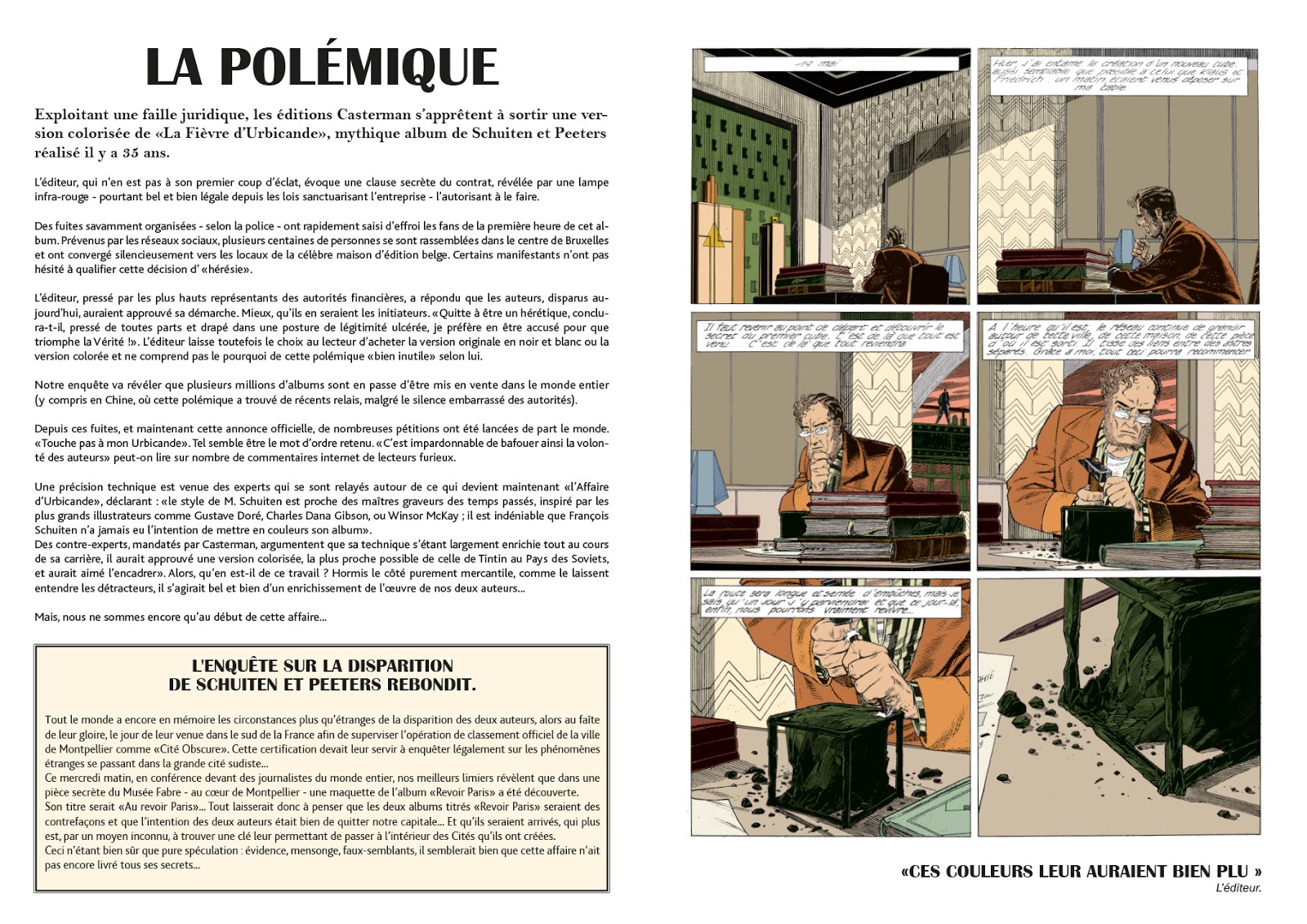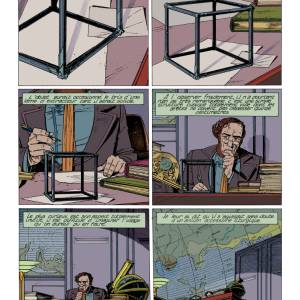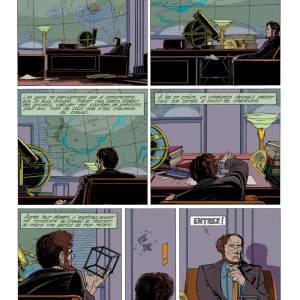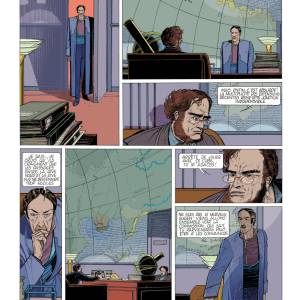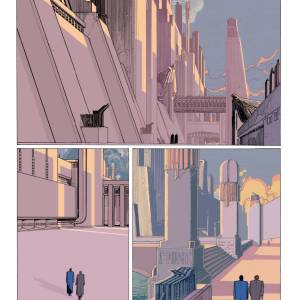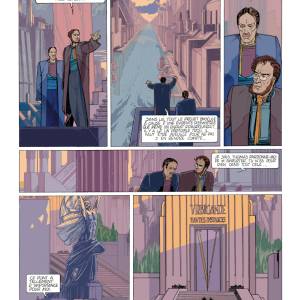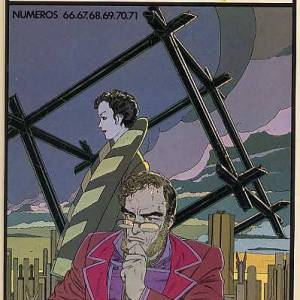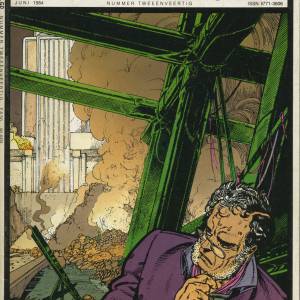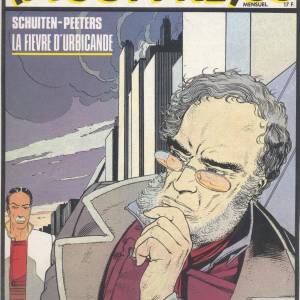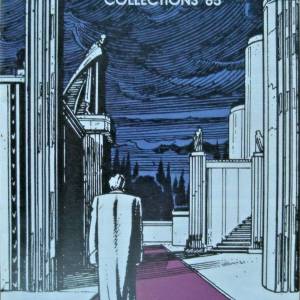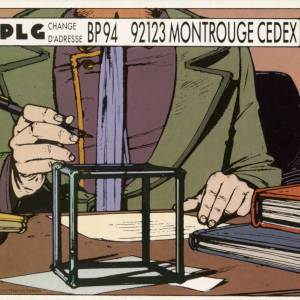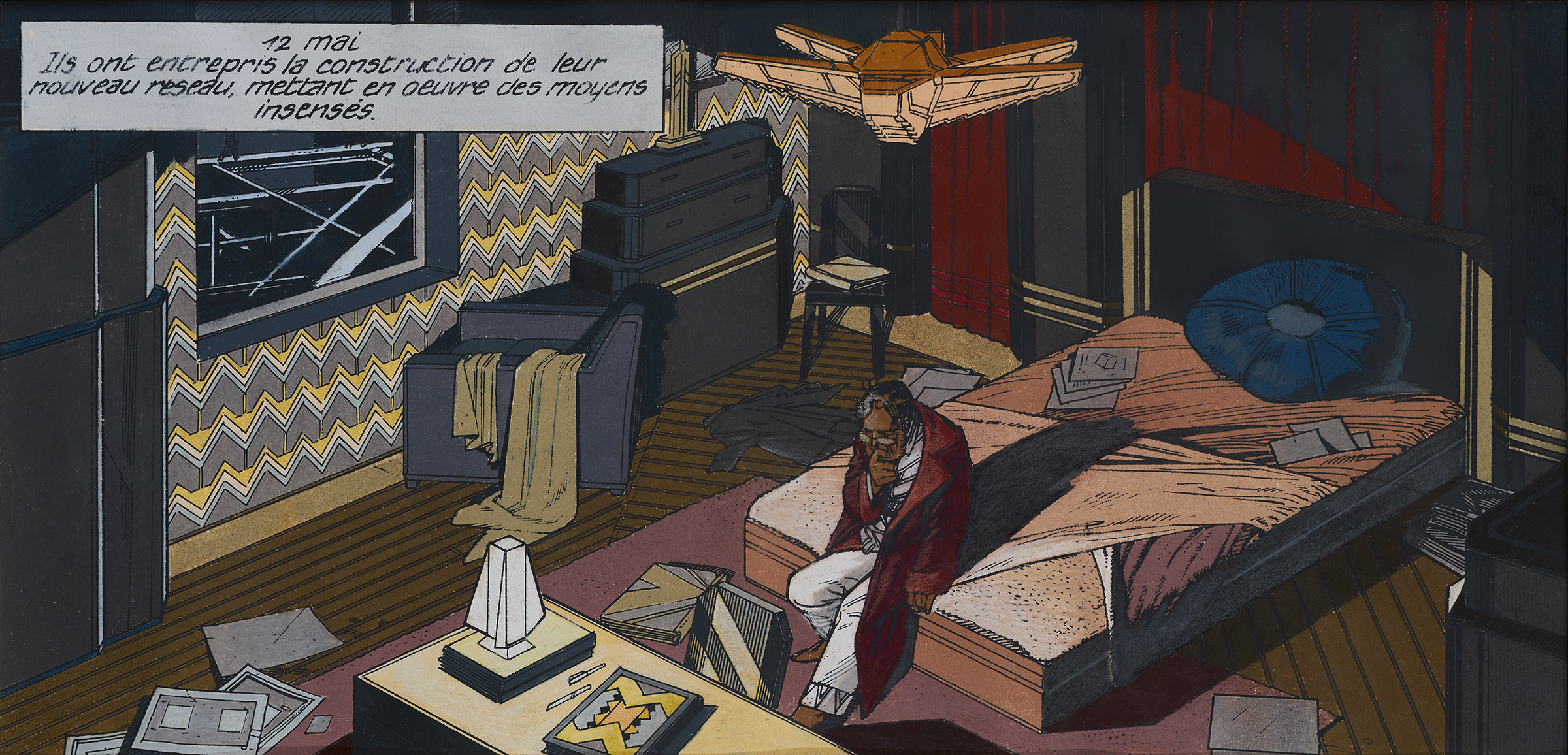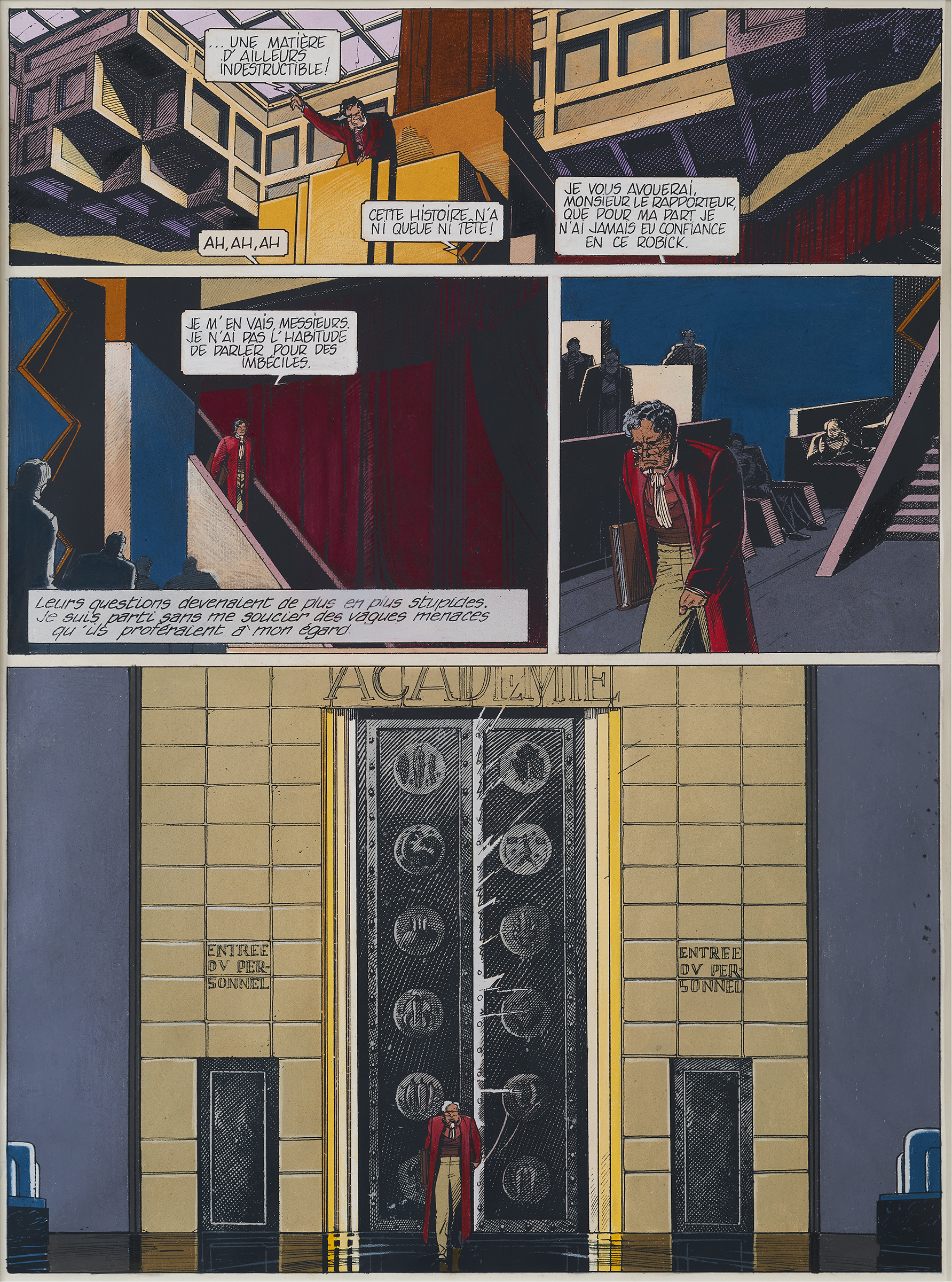- English
- Français
- Nederlands
Table of Contents
La Fièvre d'Urbicande in colour
La Fièvre d'Urbicande [Fever in Urbicand] is the second volume of the chronicles of the Obscures Cities, published in 1984. This story, which made its debut in the September 1983 issue of (A Suivre) was published in black and white.
The black and white La Fièvre d'Urbicande became one the most famous albums of Les Cités Obscures and at the 1985 comic festival of Angoulême La Fièvre d'Urbicande won the award for best album.
Although the album was published in black and white, the first attempt was to make an album in colour. And even after switching to black and white, the dreams about a coloured version always remained.
After 35 years Casterman published a new coloured version of La Fièvre d'Urbicande in October 2020. Jack Durieux is responsible for the colours.
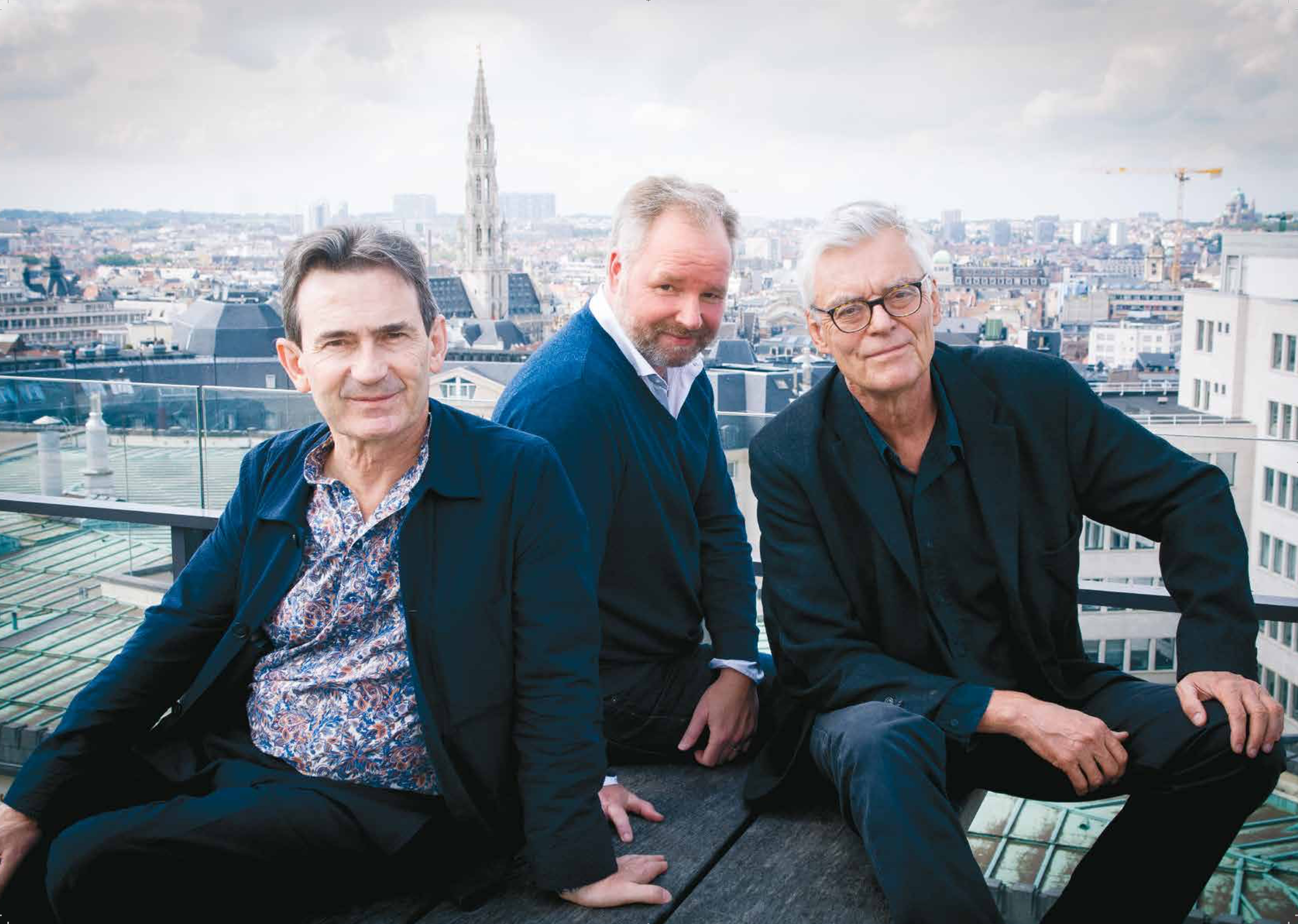
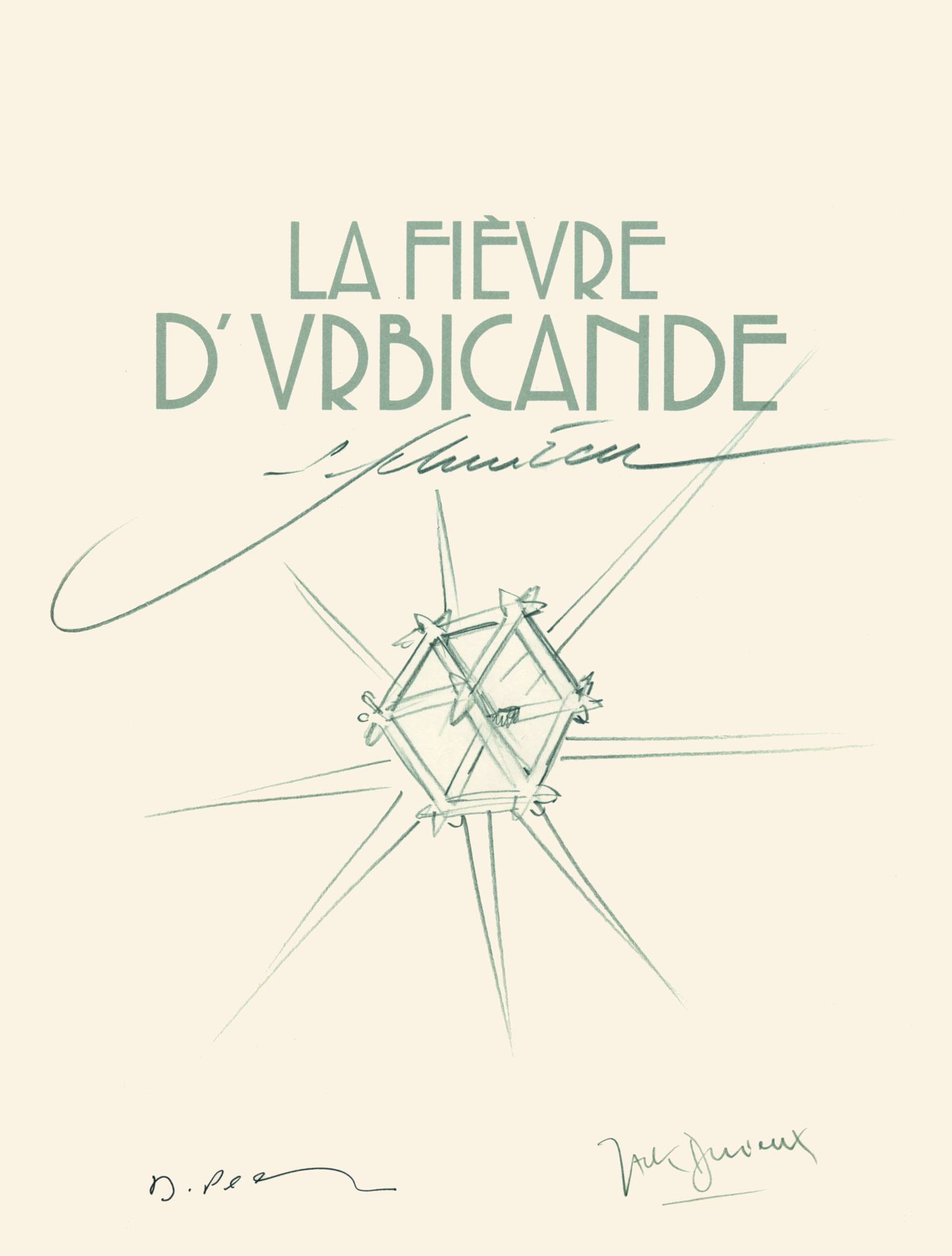
Why a coloured edition?
Benoît Peeters, François Schuiten and Jack Durieux answer the question why a coloured edition was made. See also the history of colours of La Fièvre d'Urbicande in the chapters below for more details.
Video by Vladimir Peeters.
The coloured edition
In 2019 the work started for the coloured edition. The colouring is trusted to Jack Durieux, a graphic designer and illustrator from Brussels. Jack is the twin brother of Laurent Durieux. Jack was also responsible for the "Leaning box" that holds the four volumes of the integral edition of Les Cités Obscures.
Durieux designed the full model and the colours of an album. Although he didn't redo the logo of Urbicande's original version nor the series title 1).
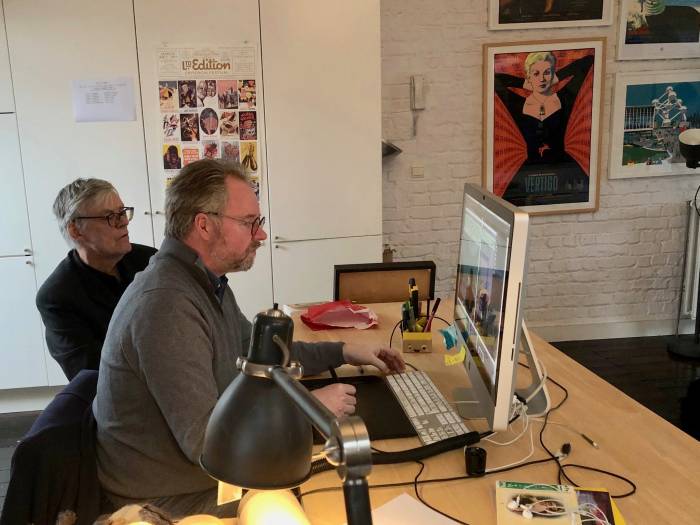
The first page of the album was exclusively unveiled at altaplana.be. The colouring looks quite different from the first attempt in 1983 and follow more the colour pallet that Schuiten used for the image of the front cover.
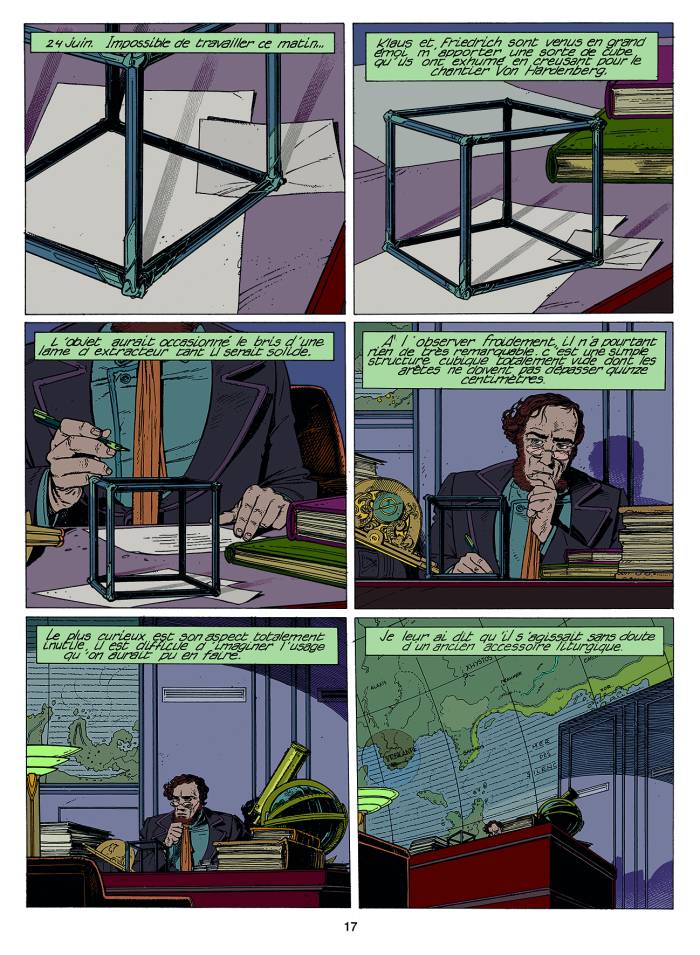
In April 2020, Casterman published a few boxes of this coloured edition.
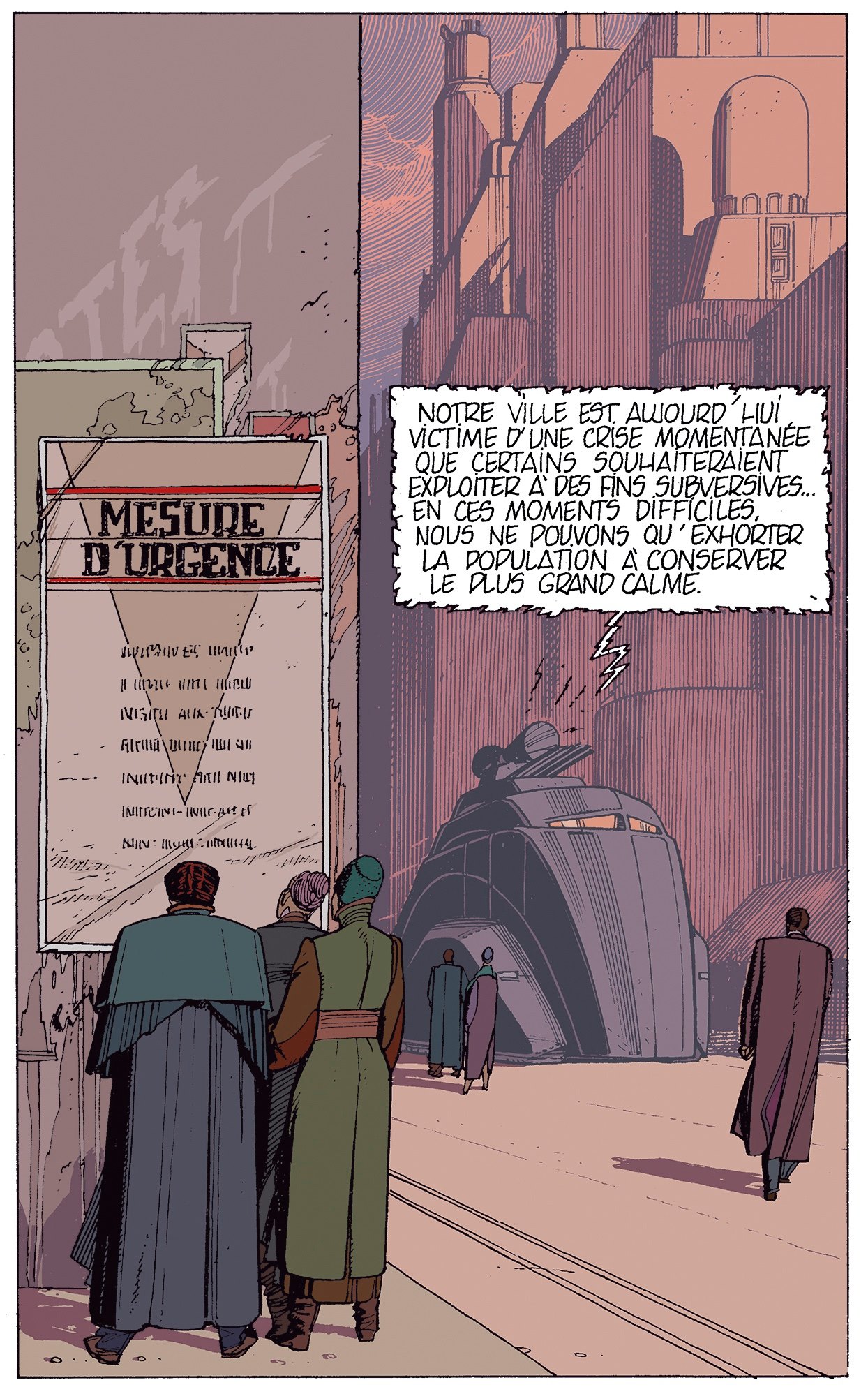
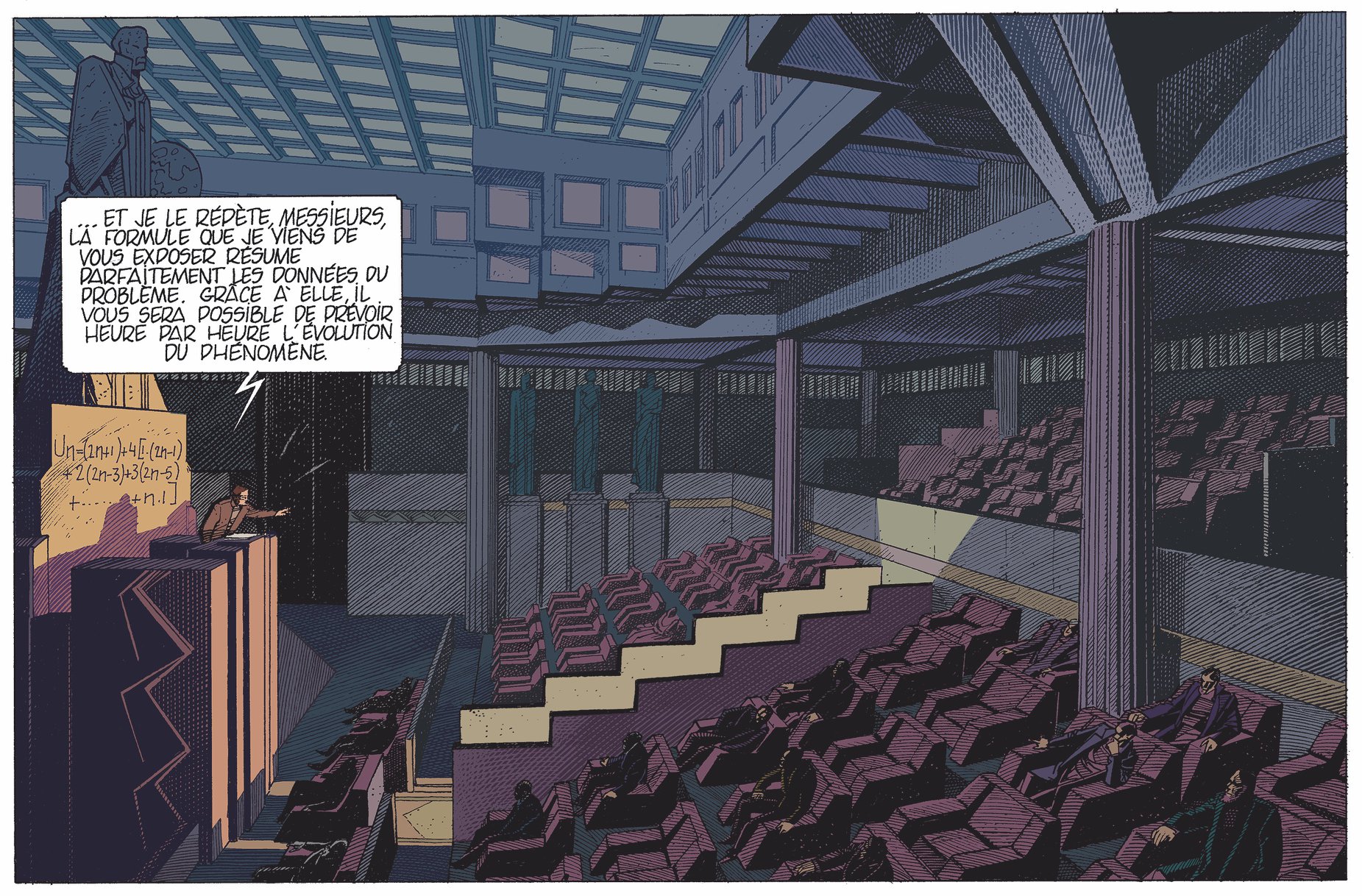
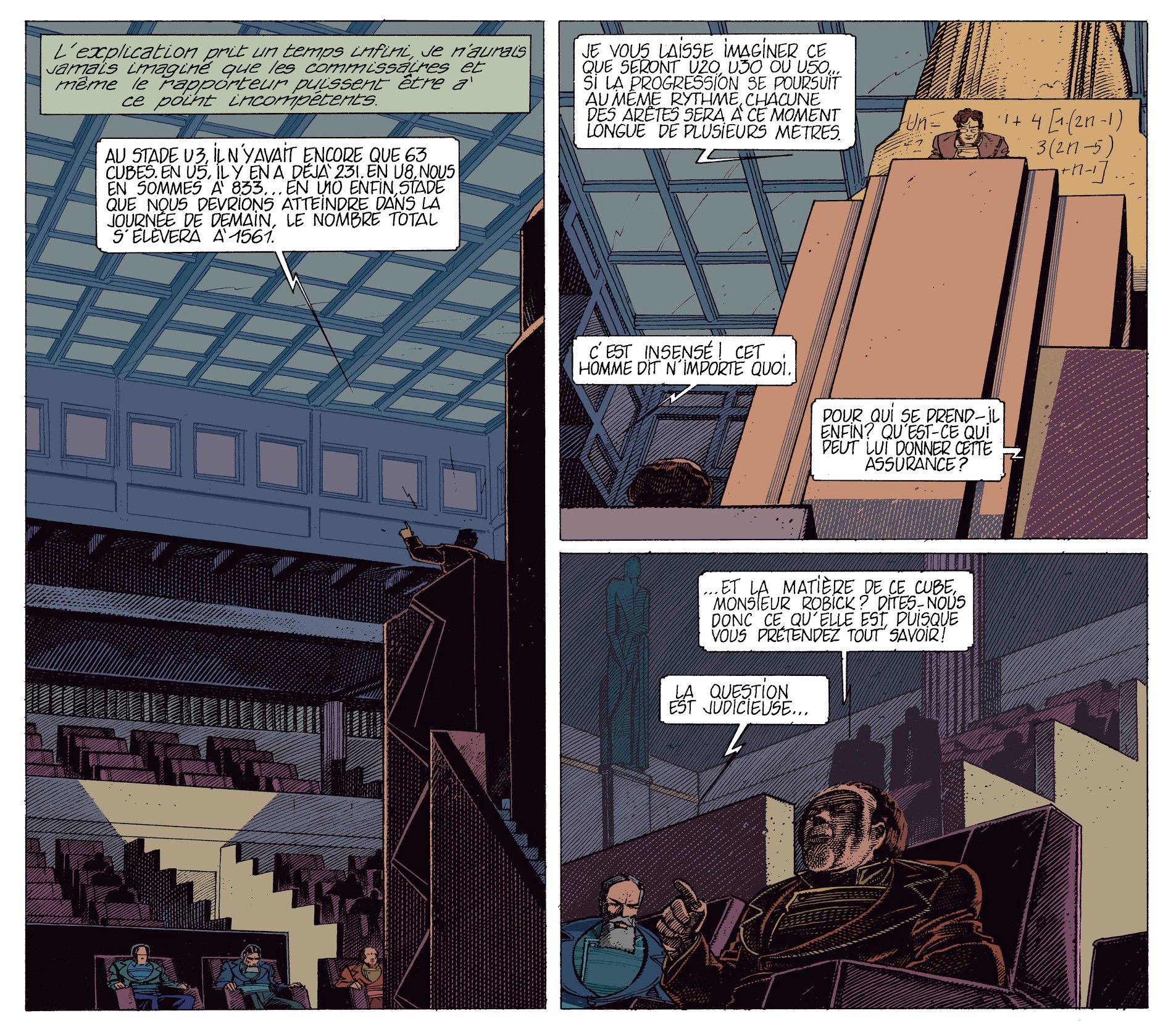

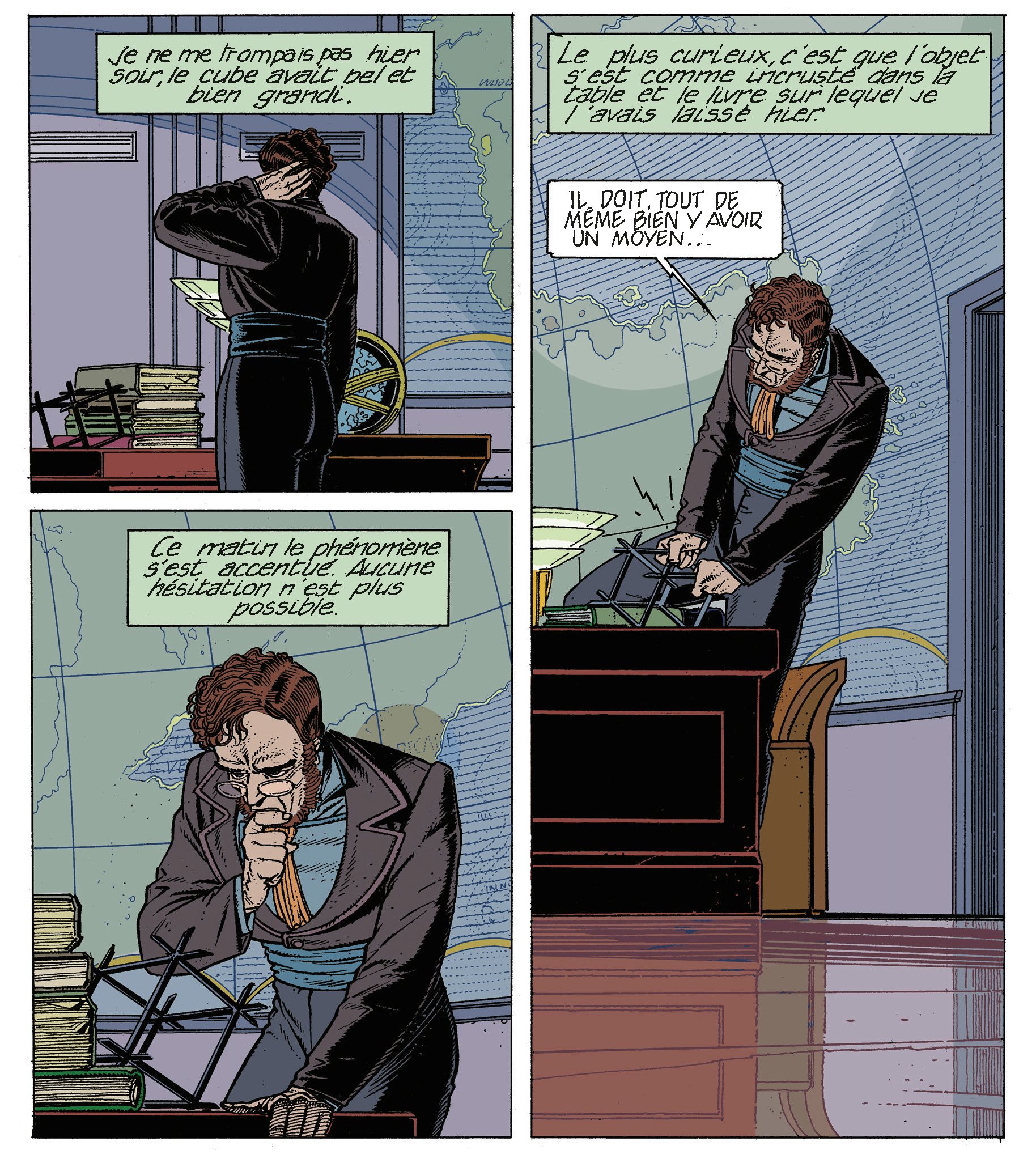
The colours by Jack Durieux can also be found on the announcement poster for Urbatekt varjatud maailmas exhibition in Tallinn, Estonia.
Preview
In August 2020, Jack Durieux showed a short preview of the new coloured album.
In September 2020 Casterman published the first five pages of the album.
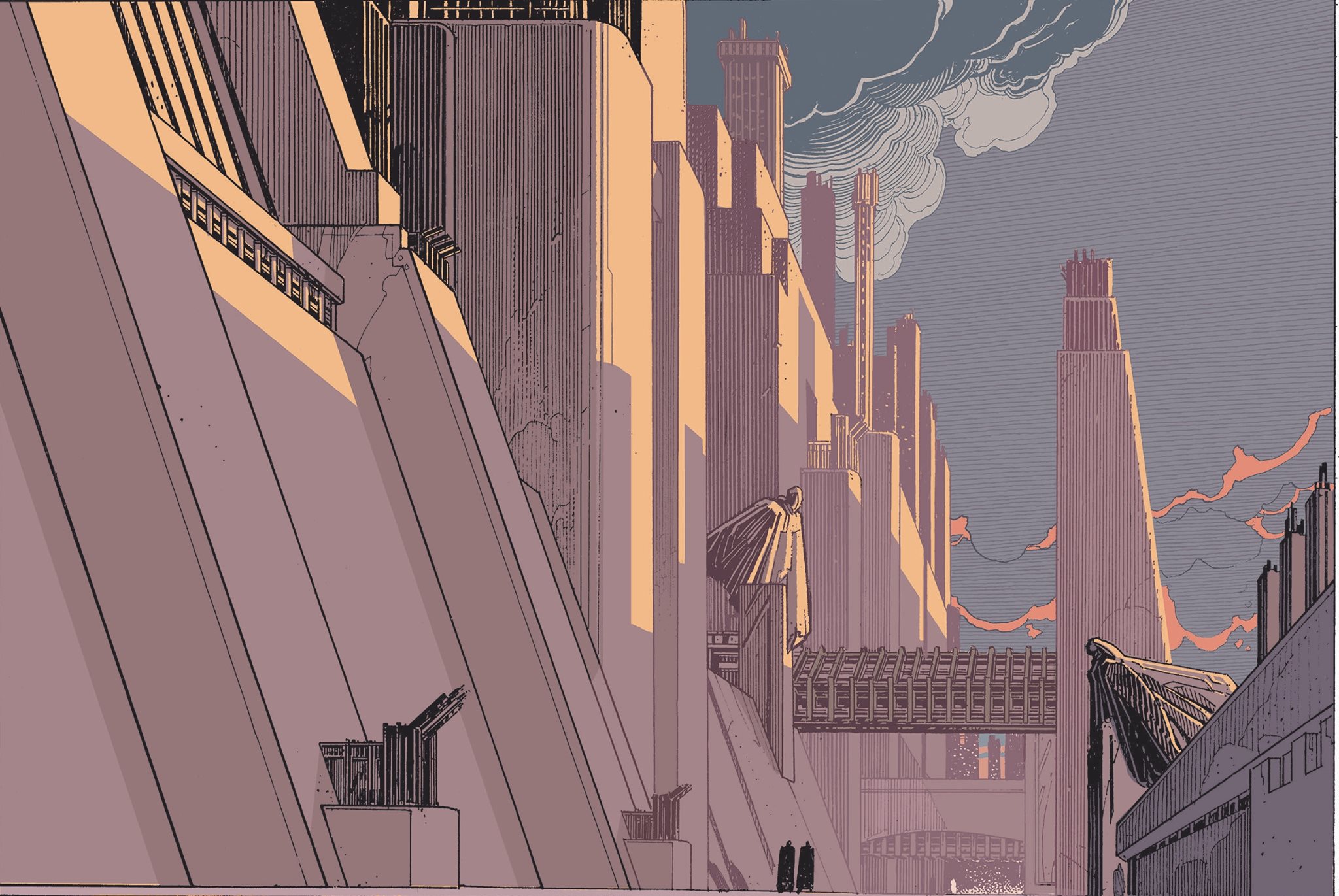
New cover image
The coloured edition has a new cover designed by François Schuiten early 2020.
This image was also used for the announcement poster of the exhibition Urbatekt varjatud maailmas in Tallinn, Estonia. During this exhibition the first coloured pages were shown to the public for the first time.
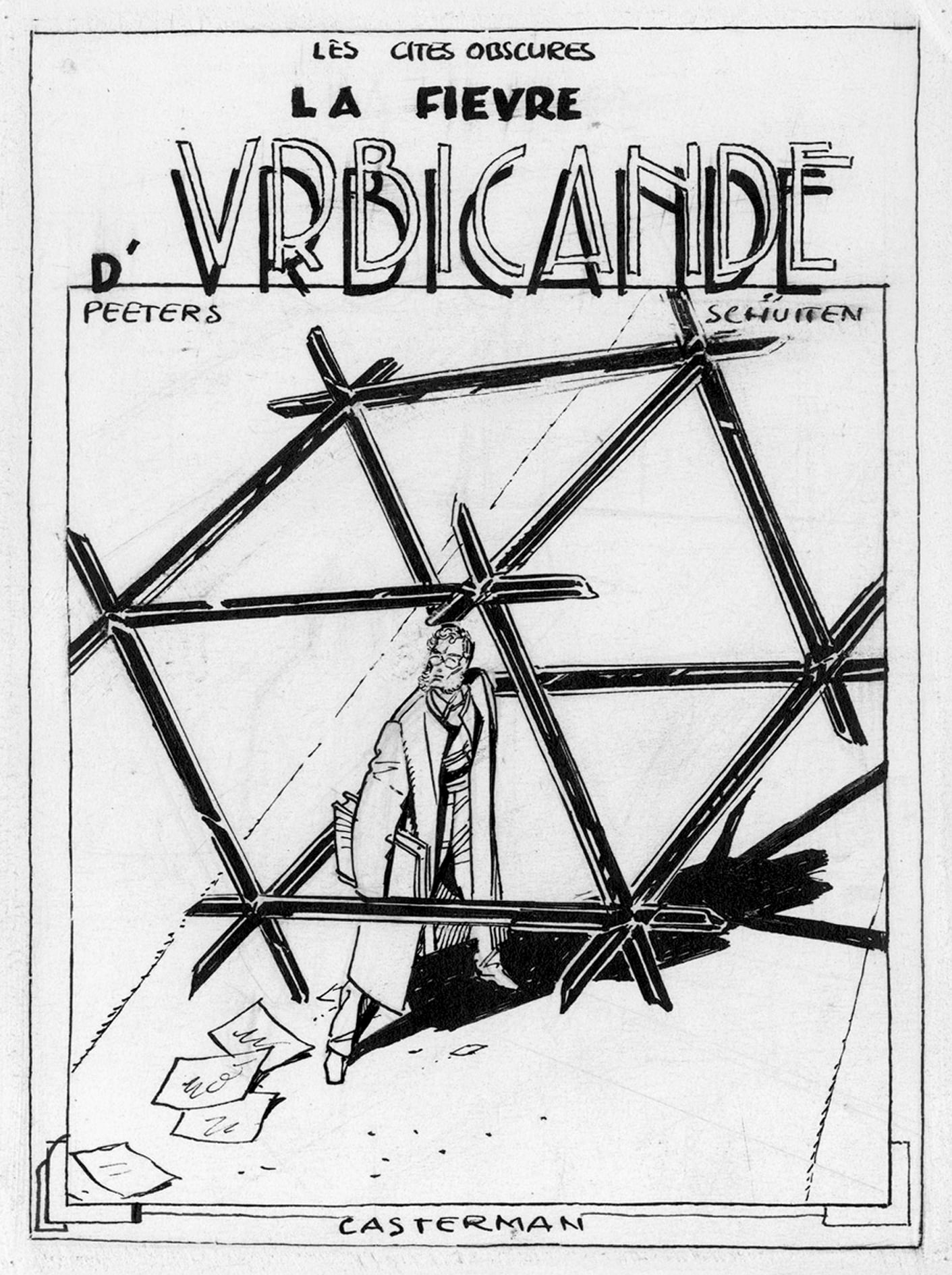
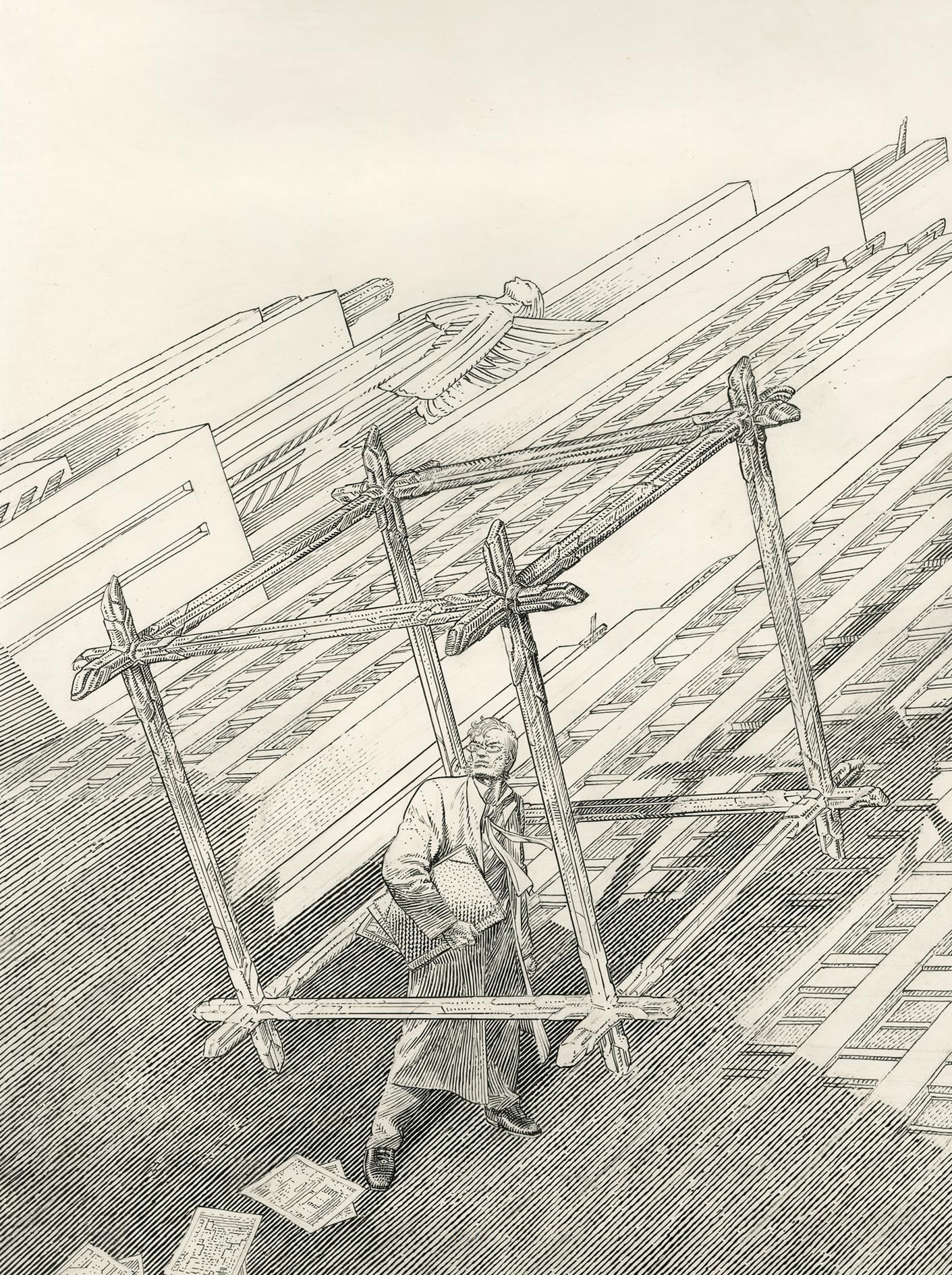
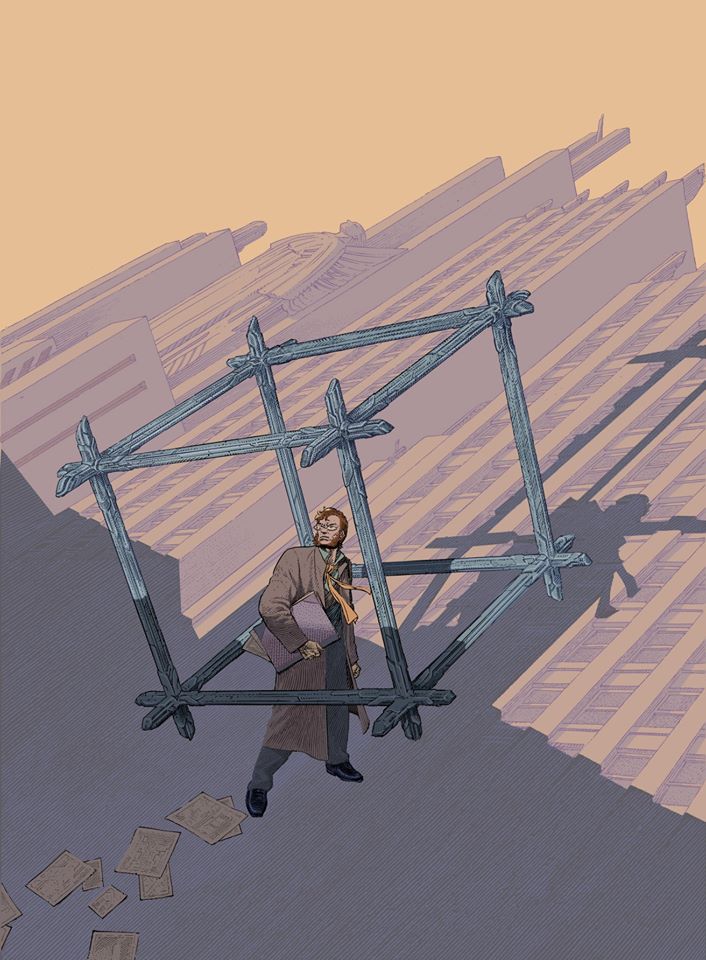
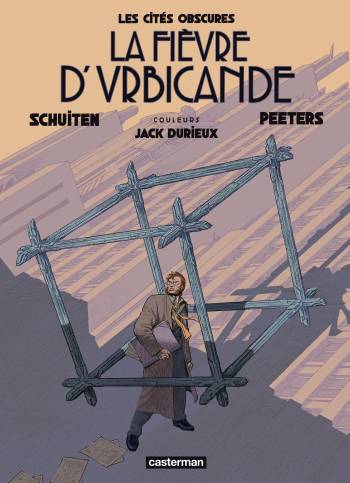
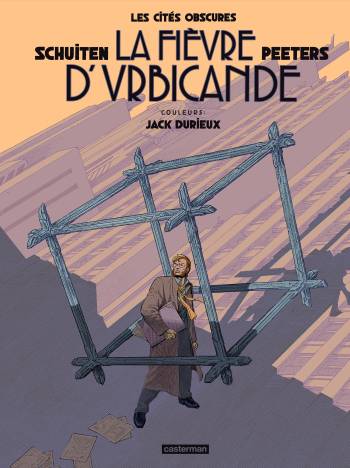
Editions
The coloured Fièvre d'Urbicande album is published in French in a normal and a deluxe edition 3). The deluxe version is a large sized book (300 x 400 mm) with canvas binding. An additional print is added to the book. This edition is numbered and signed by all three authors, in an edition of 700 copies.
Both albums have an additional 8 pages with the history of La Fièvre d'Urbicande and its colours.
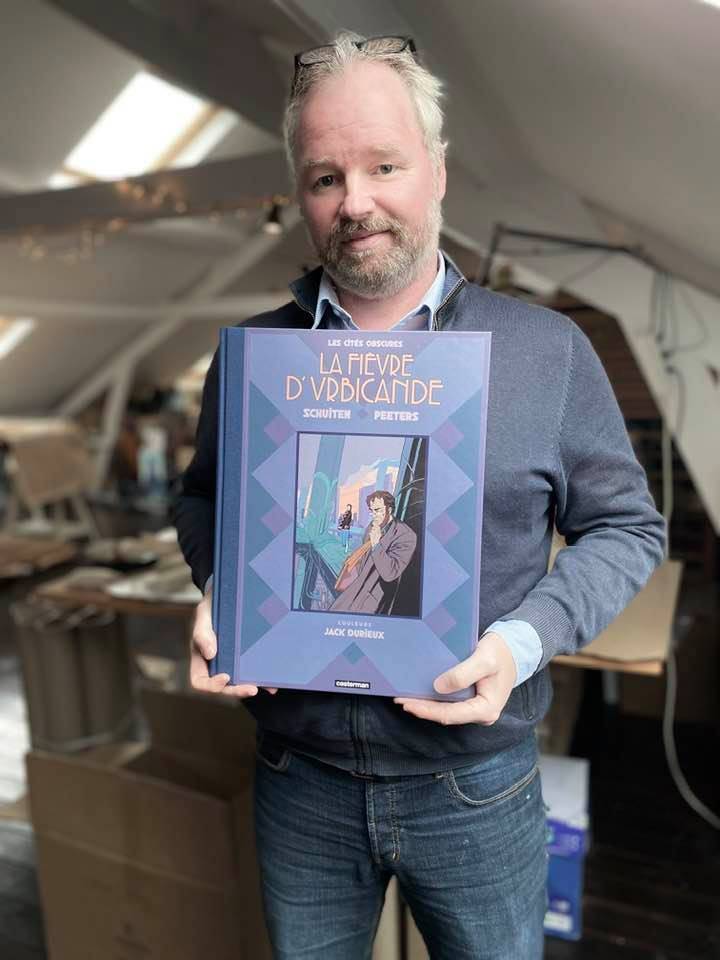
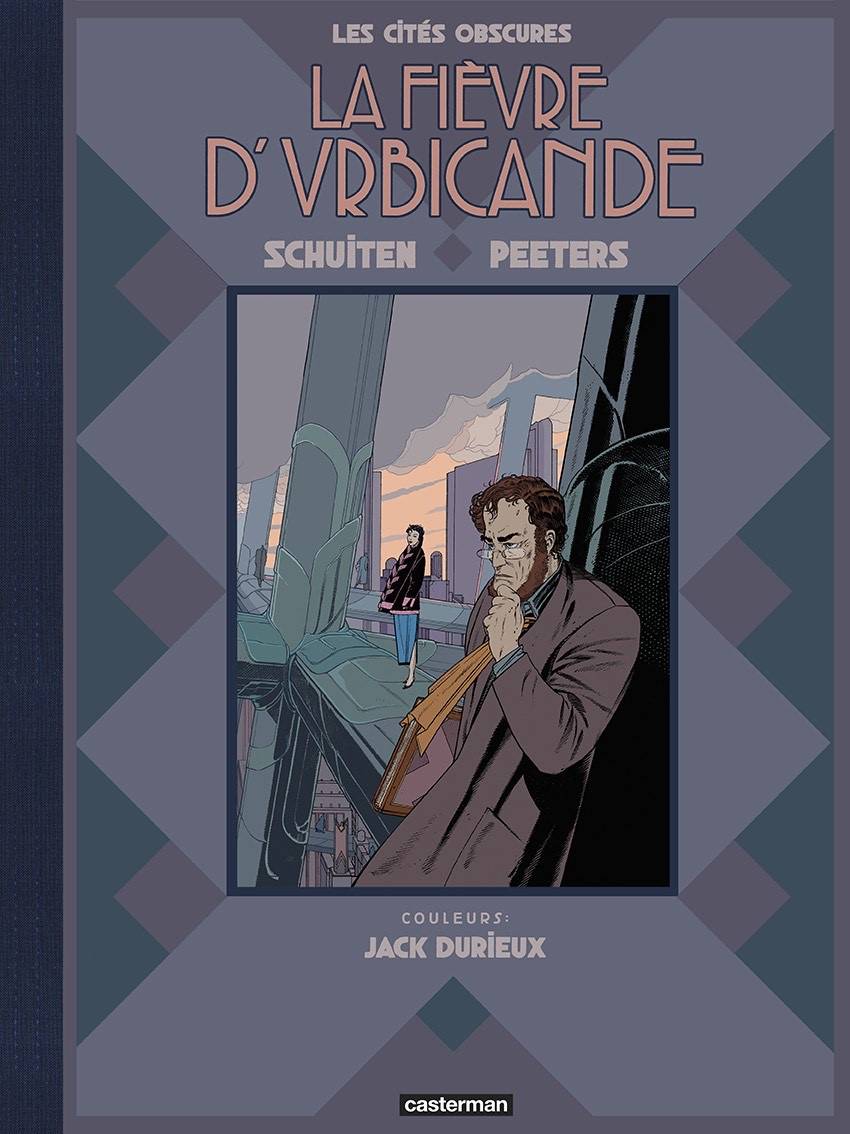
Press dossier
Casterman released a Press dossier with backgrounds and several interviews.
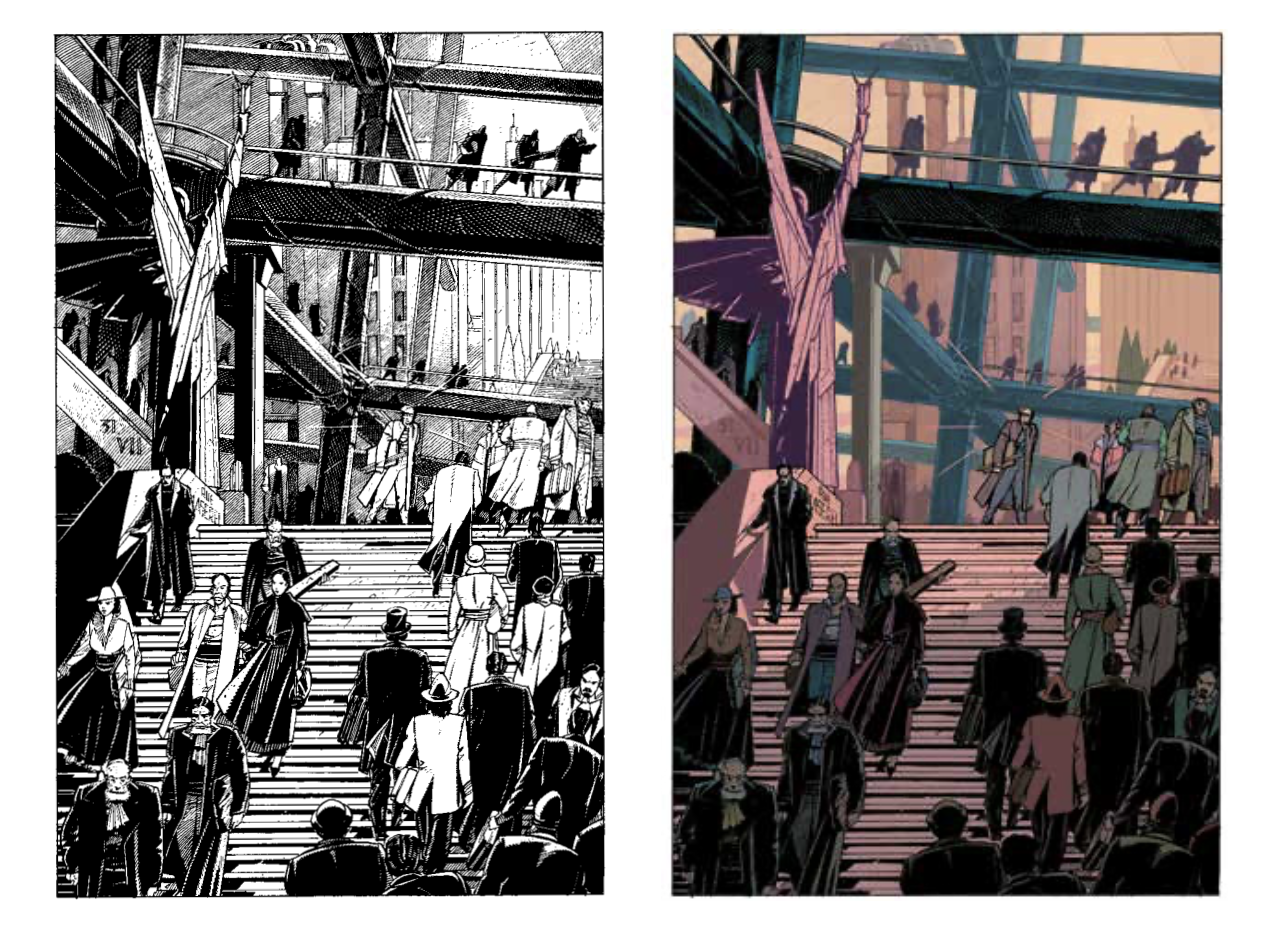
Ex-libris
In August 2020, publisher Atlantic12 showed a video of the printing process of an ex-libris. The ex-libris will be used for the signing sessions that are planned around the release of the album. The ex-libris will be signed by Schuiten, Peeters and Durieux. Peeters will write something in the phylactery and Schuiten and Durieux will draw on the image to make it a special and unique piece.
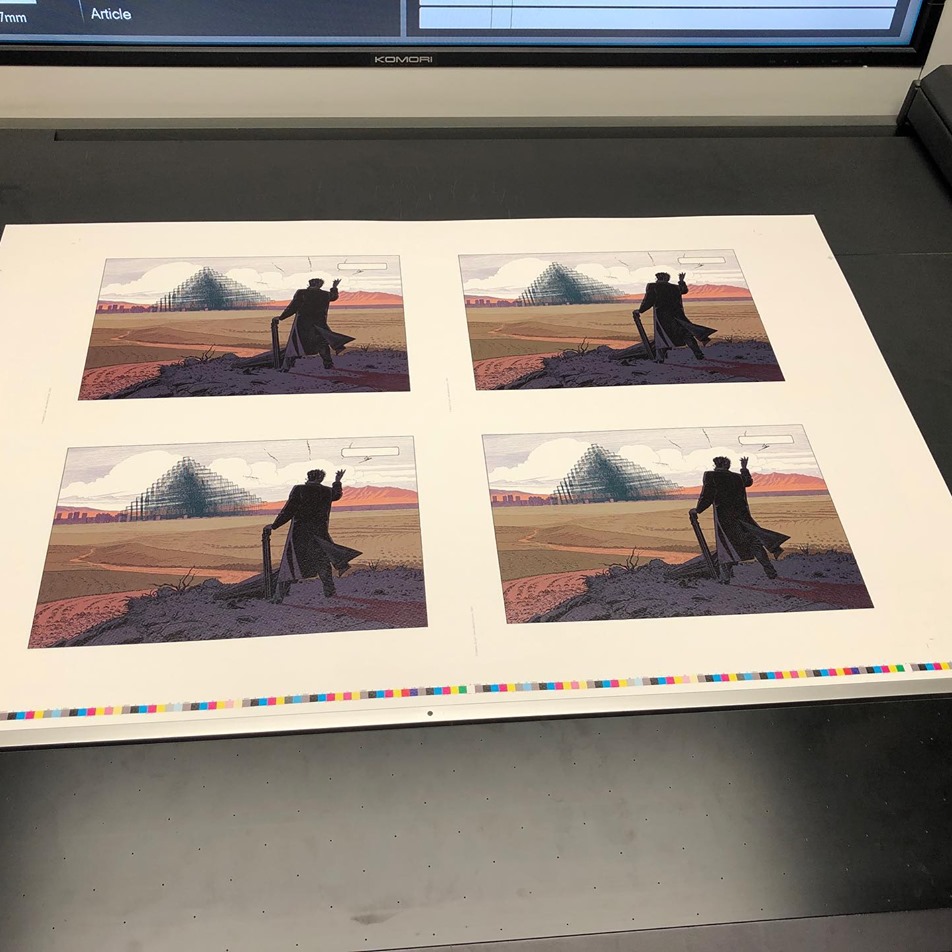
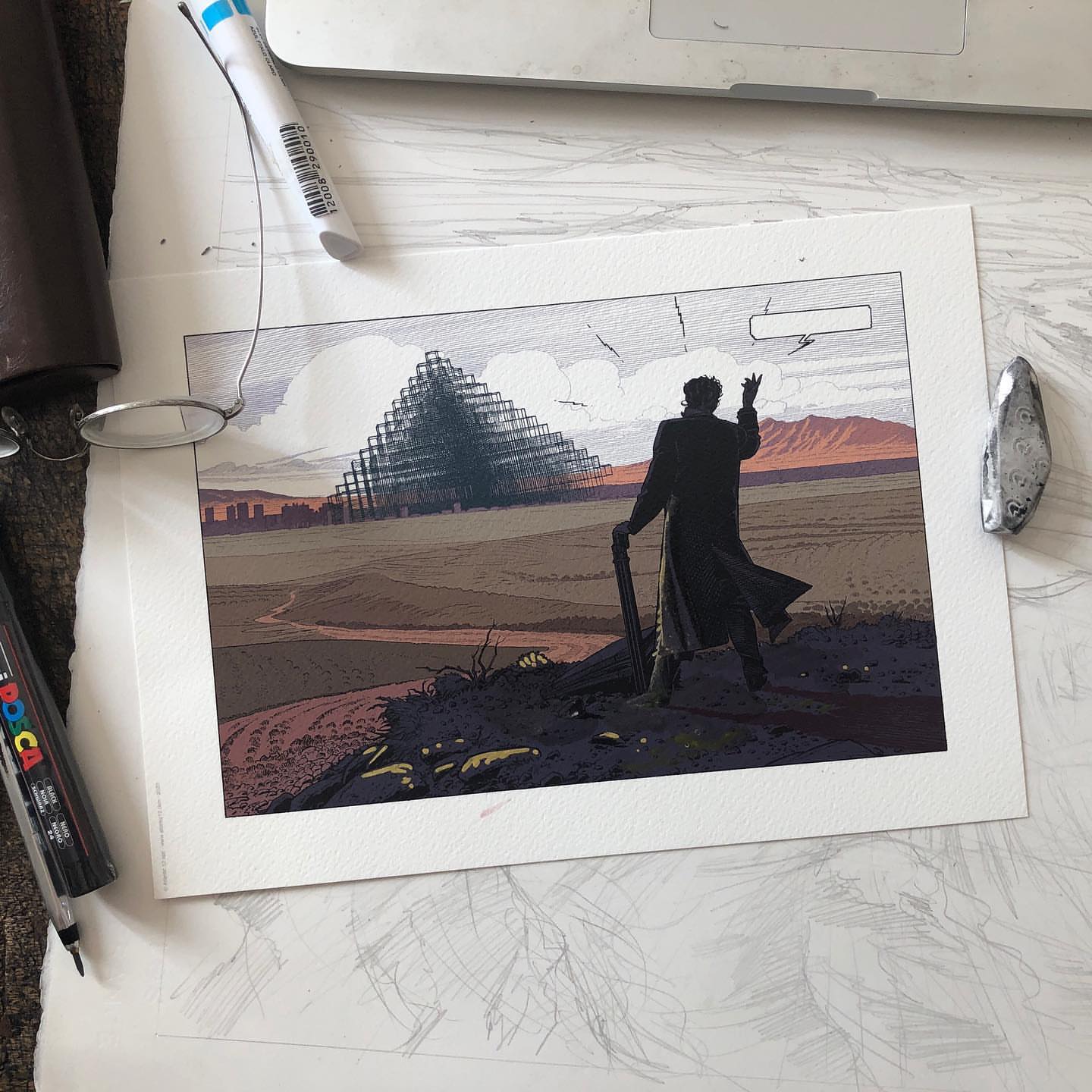
The history of colour
First attempt
After Les Murailles de Samaris, that was drawn in colour, La Fièvre d'Urbicande was made in black and white. At the beginning, exhausted by the very long colouring of Samaris, Schuiten intended to entrust the colouring of Urbicande to Françoise Procureur. Procureur is a colourist, who also worked with Alain Goffin (Le réseau Madou) and Phillipe Geluck (several Le Chat albums).
Although she was very talented, Schuiten and Peeters soon realized that it would not work as the progress of the colouring was too slow. Françoise Procureur coloured at least two pages in 1983, the period of the prepublication of La Fièvre d'Urbicande in (À Suivre).
These coloured pages were published in a little book called “Histoires de timbres” (published in 2003) and one can also be found on page 64 of “Schuiten & Peeters, Autour des Cités Obscures” (1994).
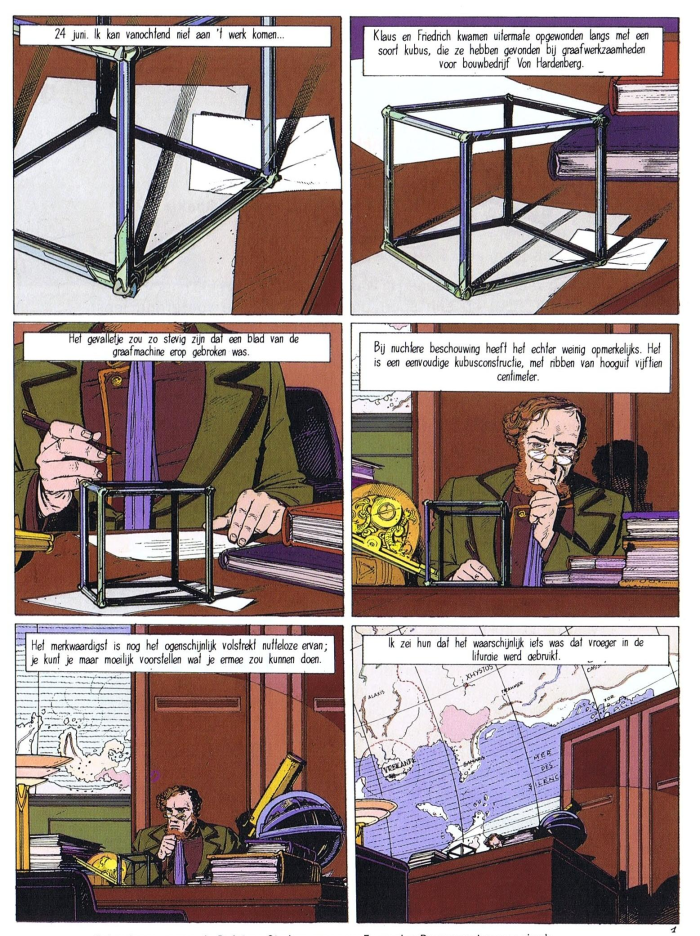
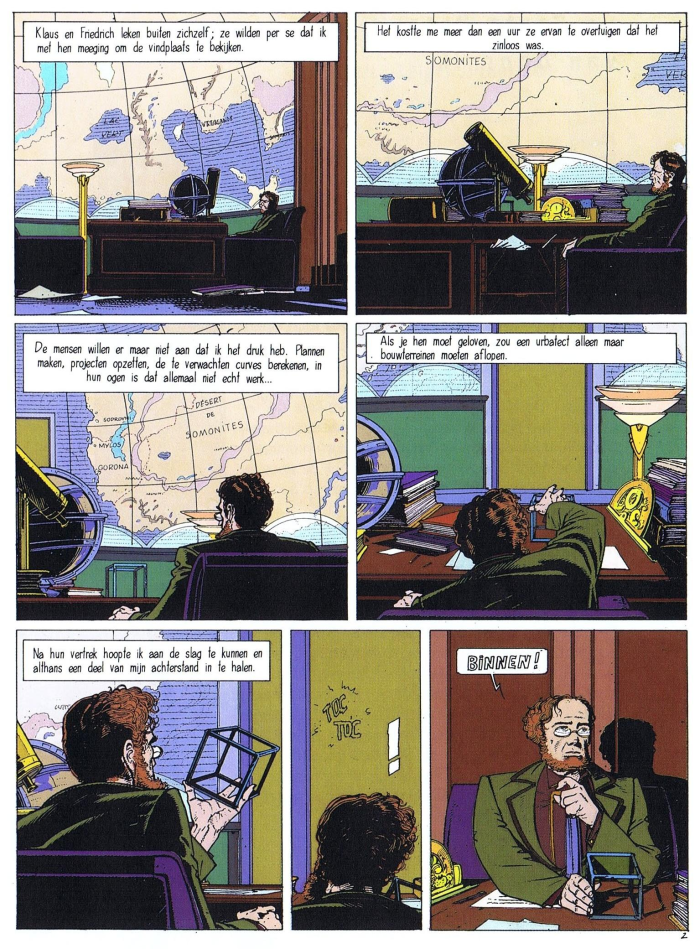
Switch to black & white
A few chapters were conceived in the idea of colour before Schuiten and Peeters decided to switch to black and white. François Schuiten oriented the drawings afterwards to be edited in black and white. They also changed the pagination and the length of the story. The length of the story was necessary to treat it as a « Roman (à Suivre) » the only series that was available to publish in black & white by then.
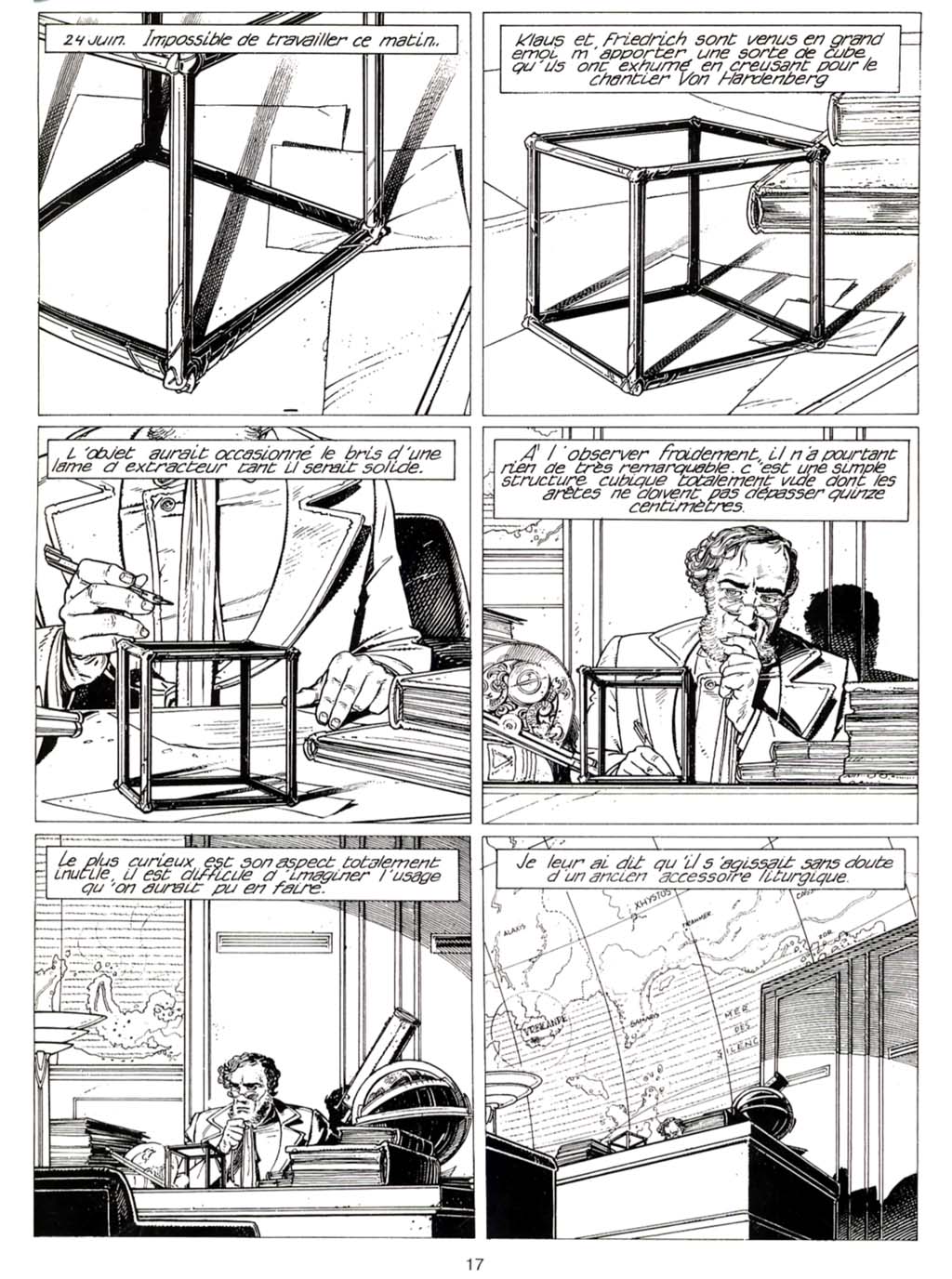
Ideas for colour remained
The ideas for colour in this story has remained in different works. Le Guide des Cités mentions that coloured images from Urbicande are rare, but shows two coloured images of the south side of Urbicande.
Biennale de Venise
These images are part of a page of La Fièvre d'Urbicande (page 20). François Schuiten coloured this page himself in 1986 for “Biennale de Venise”. The whole page can be found in a very rare catalogue.
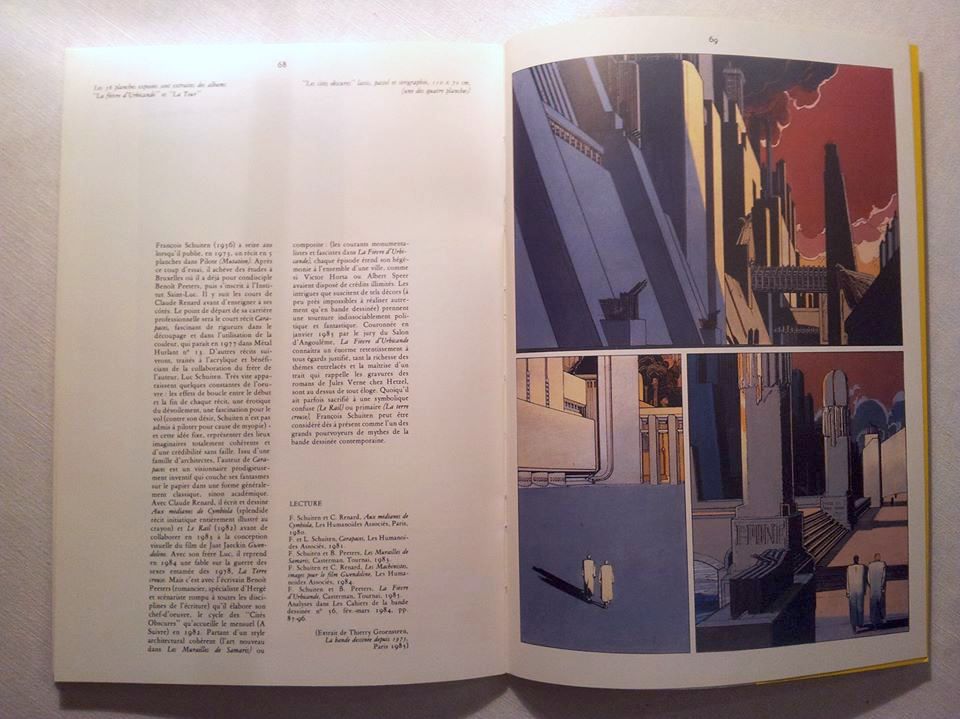
Some details of the page, as published in Le Guide des Cités.
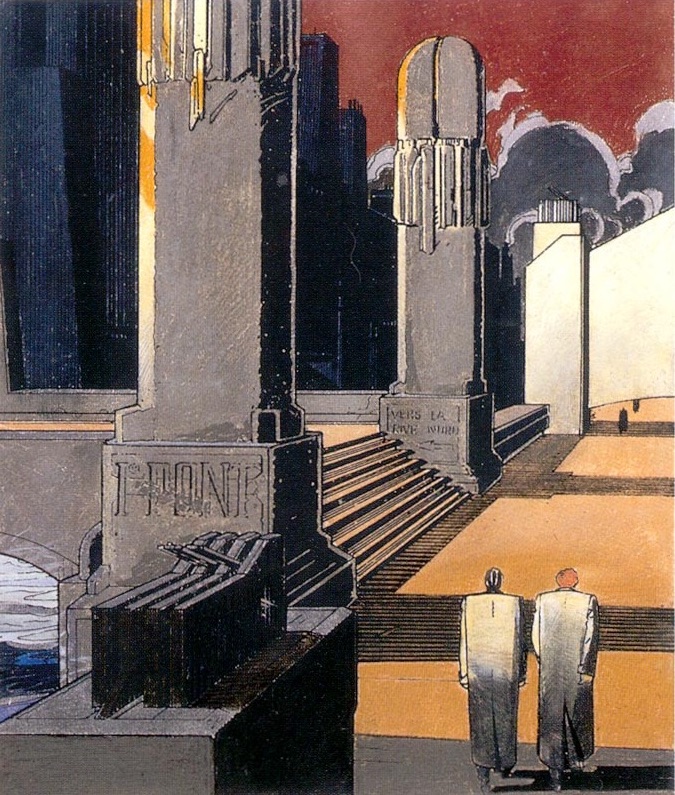
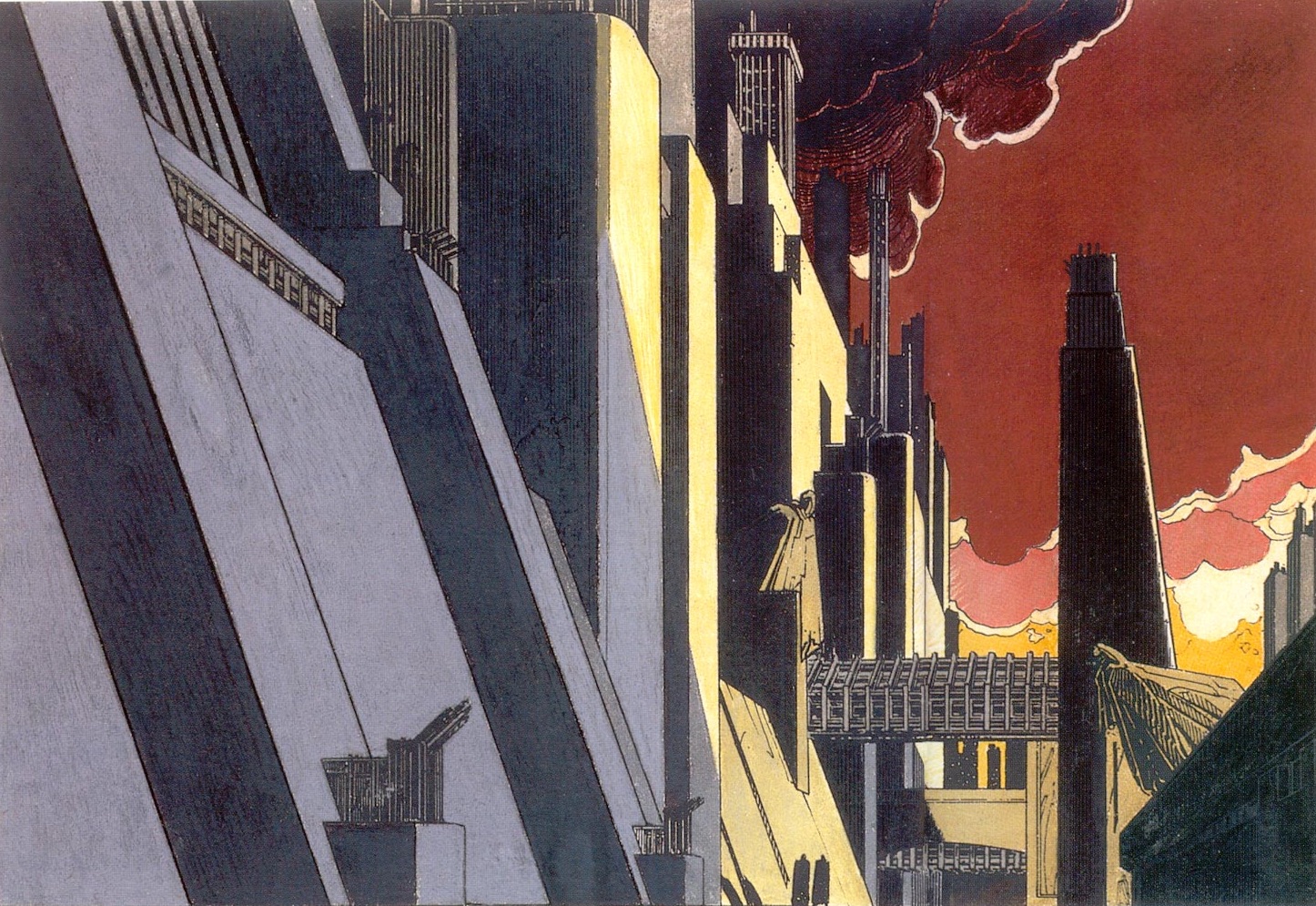
Covers
Although Schuiten and Peeters had to switch to black and white for the story. The covers of (A)Suivre.., where the Fièvre d'Urbicande was prepublished, were in colour.
(A Suivre) n°68 - 1983, Recueil (A Suivre) n°12 - 1984, “Wordt Vervolgd” n°42 -1984, Casterman Collection 85 - 1985, PLG change d'adresse -1991 (Françoise Procureur)
But also during the Exposition “de Bruxelles à Brüsel” Schuiten and Peeters played with colours in La Fièvre d'Urbicande.
Coloured enhancements
Un Opéra Pictural
On the images below: François Schuiten browsing through the files of the original edition with some coloured images. Some of these images were used in the exhibition “Un Opéra Pictural” (2005).
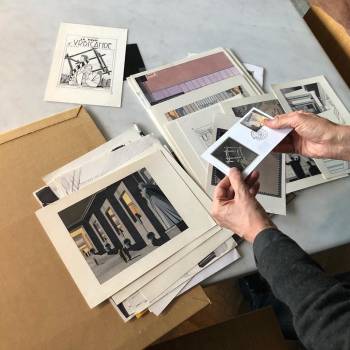
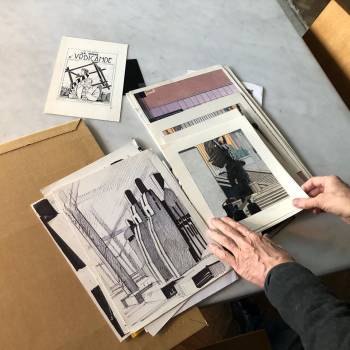
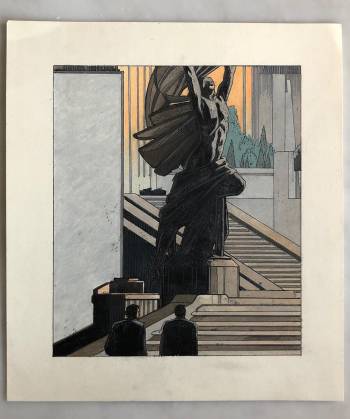
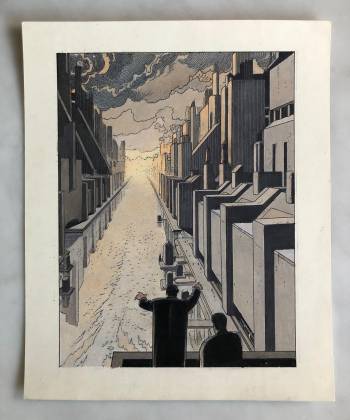
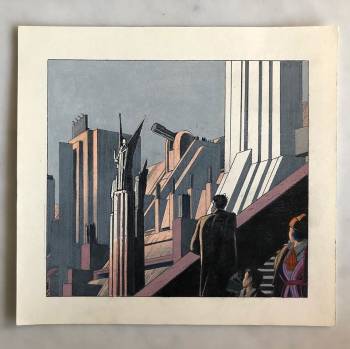
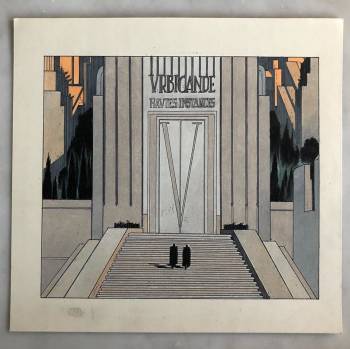
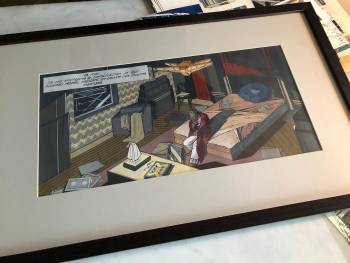
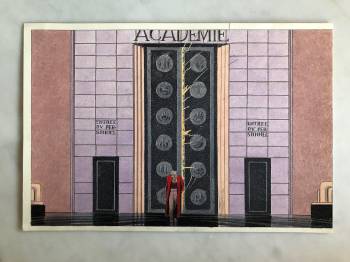
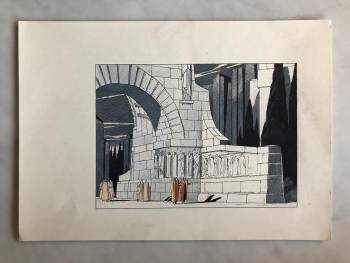
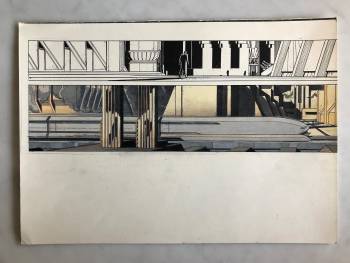
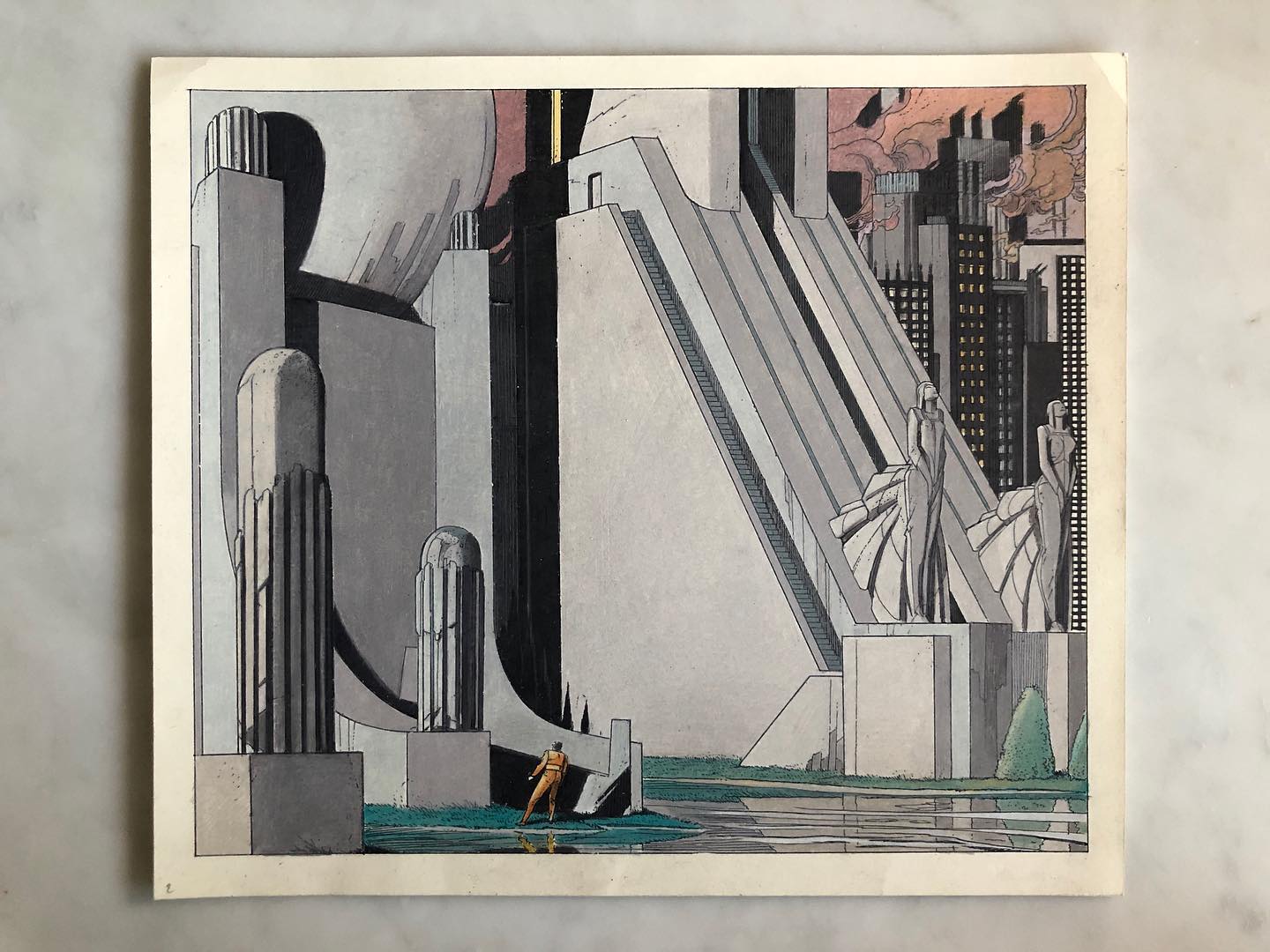
Screenprints in colour
Several images of La Fièvre d'Urbicande were used by Gilles Ziller to make screenprints.
- Eugène Robick, screenprint (100 + 36 EA copies), 1985
- Eugène Robick, screenprint (EA), 1985
- Urbicande, ce soir a l'aspect d'un champ de ruines, screenprint (HC), 1985
But also the exhibition in Haarlem showed a coloured image of La Fièvre d'Urbicande. And with the latest publication of the German edition of La Fièvre d'Urbicande an ex-libris was released with a coloured image.
With the release of the first integral edition of Les Cités Obscures in 2017 François Schuiten revisited La Fièvre d'Urbicande together with Laurent Durieux. Laurent coloured two images of La Fièvre d'Urbicande for a silkscreen print.
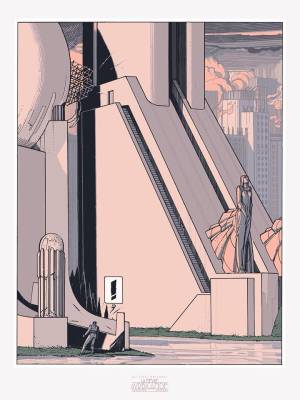
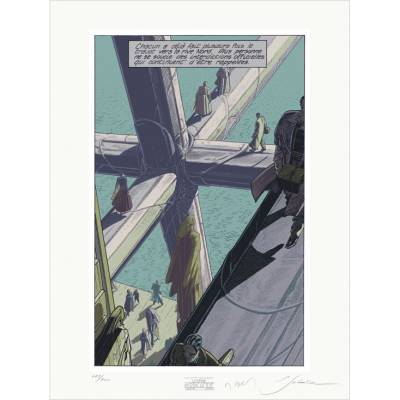
Laurent Durieux worked the next years on the colouring of the Blake and Mortimer album Le Dernier Pharaon based on the black and white drawings by Schuiten.
Black & white versus coloured
Discussions about colour or staying with the original black and white version has been going on since the release of La Fièvre d'Urbicande in 1985.
In 2017 the discussion even led to the tragic disappearance of Schuiten and Peeters in Montpellier during their visit to Pierresvives. The disappearance prompted their publisher to quickly put a colourful edition of “La Fièvre d'Urbicande” on sale, causing a monster outcry and sales records around the world 4).
Somehow this edition cannot be found anymore, except for the one page below.
